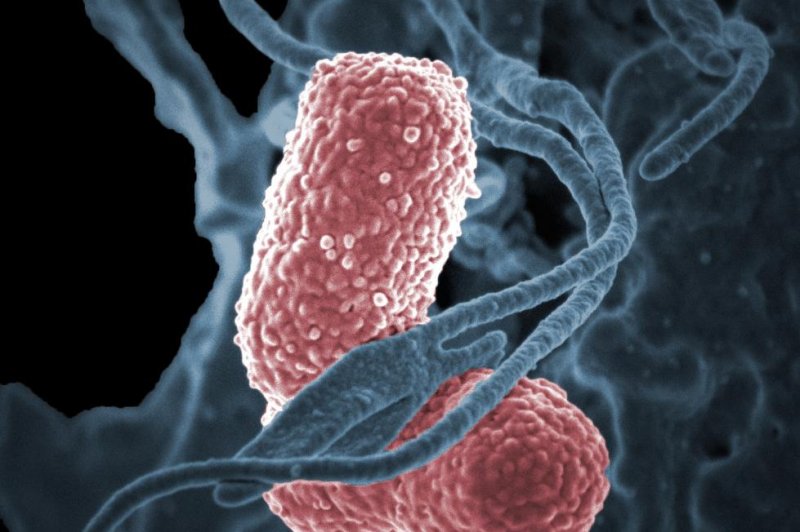Scientists say their findings highlight the need for developing aggressive methods for tackling plasmids in bacteria. Photo by the U.S. National Institutes of Health
OXFORD, England, Nov. 8 (UPI) -- Scientists at the University of Oxford say they have identified one of the key evolutionary catalysts for antibiotic resistance in bacteria.
In a study published in the journal Nature Ecology & Evolution, a research team found small DNA molecules called plasmids help boost bacterial drug resistance. The authors say the presence of more than one copy of the molecules has helped pathogens evolve to meet new threats over time.
While plasmids are known to transfer from one individual bacterium to another, conferring drug resistence in a process called horizontal gene transfer, that alone doesn't explain their full effect, researchers say.
"Our paper demonstrates that plasmids can also act as evolutionary catalysts that accelerate the evolution of new forms of resistance," researcher Craig MacLean explained in a press release. "This occurs because bacteria usually carry more than one copy of a plasmid, which allows resistance genes carried by plasmids to rapidly evolve new functions -- in this case, the ability to degrade an antibiotic. Additionally, plasmids automatically amplify the number of copies of these new and improved resistance genes."
Scientists identified plasmids after examining bacterial strains cultured in a specialized broth at 37 degrees Celsius. The team performed 6 biological replicationss for each strain and assessed their fitness levels. Plasmids were observed to move between individual bacteria, effectively transferring their genes.
The team stresses antibiotic resistance may pose a significant challenge for medical professionals in the future, noting a report from the O'Neill Commission predicts antibiotic resistance will lead to 10 million deaths per year by the year 2050.
"These findings demonstrate a new role for plasmids in antibiotic resistance and evolutionary innovation, and they highlight the threat posed by plasmids to public health," MacLean added.
The study's authors are calling for further research to develop new methods for attacking plasmids and halting the spread of antibiotic resistance.















